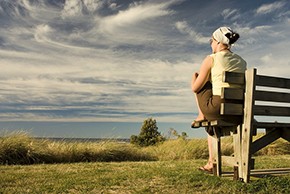Steps toward solitude
Read Sara Maitland's article on the perils of silence.
Several times a year, when I find myself yearning for solitude, I schedule three or four days at a retreat center several hours from home. Invariably, after I’ve made arrangements I begin to have second thoughts. Suddenly home seems especially appealing. Why leave the garden in summer? Why leave the warm haven of home in winter? Why miss a slow weekend breakfast with my husband? Why take so much time away from work? But I always push through my hesitations and make it out the door. Then, as soon as I’m on the road, a sense of anticipation takes over. By the time I pull into the retreat center, I’m thrilled to be there and to have time away.
Upon arrival, I don’t settle automatically into the silence of solitude. At first the silence can be as startling as noise. It takes hours, even a full day, before I let go of the habit of experiencing life as a chain of activities lived within the press of a schedule. I’m used to checking up on loved ones each day, for example, or having them check on me. I’m used to working through a “to do” list, one with priority items flashing red. I’m used to perceiving my life as moving somewhere and accomplishing (or failing to accomplish) something. When I’m suddenly alone with myself, with nothing to do but observe what’s happening around me, I feel a moment of panic. I’m not sure I want this absence of noise—either the quiet in my head or in the world around me. I know that emotions I’ve stored up—sadness, anger, regret—may catch up with me and overwhelm me. Sometimes the emotions that surface are surprising.





